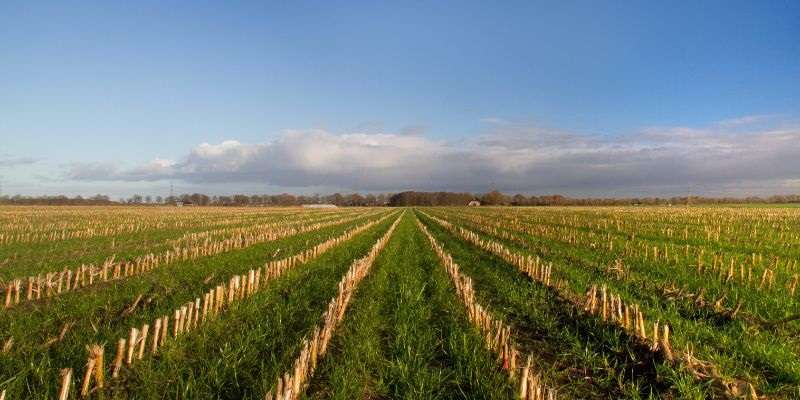BankIowa
Updated 10:29 AM CDT, Mon August 5, 2024
Published Under: Ag

Severe weather conditions like storms, droughts, and floods can have a big impact on agriculture businesses and farmers. These extreme weather events can damage crops, destroy infrastructure, and disrupt the entire farming process. It’s important for farmers to be prepared and have strategies in place to mitigate the effects of severe weather.
Cover Crops
Cover crops are plants that are used to replenish the soil. Cover crops can provide many benefits to your farming operation, including conserve soil moisture, attract a variety of pollinators, aiding traction during harvests, and more. Some common types of cover crops are grasses, legumes, and brassicas. Factors to consider when choosing your cover crop is which season are you using specific cover crops, what is your end-goal, and is one region better than the other to plant a cover crop. Cover crops can work as quickly as one harvest or take a few to see a difference in the fields. When implemented correctly, a farmer can see great rewards.
Conservation Tillage Practices
Conservation tillage is the practice of building up crop residue on the soil surface to minimize the impact of water and wind erosion. (SARE Outreach, 2020). A variety of tillage practices exist, like No-Till, In-Row sub soiling, Strip-Till, and Ridge-Till. Conservation tillage’s sole purpose is to conserve the soil residue, in turn enhancing the soil quality, improving nutrient cycling, increasing water conservation, and more. Cover crops and conservation tillage practices complement each other; by implementing the rotation of different crops, it can optimize the biomass production. (SARE Outreach, 2020).
Crop Rotation
Crop rotation is crucial to your farm’s agronomy and the ever-changing economic market. Crop rotations increase nutrients efficiency and cycling, decreases different types of plant diseases, keeps different species of weeds under control, and increase the health of your soil. A common top of crop rotation in Iowa would be corn followed by soybean, in a two-year rotational system. This crop rotation can even be beneficial during seasons of drought. As soybean doesn’t require as much water, during times low-moisture fields, soybeans can help the soil return back to normal levels of moisture before corn is set to be planted again.
Resistance to New Practices
The new agri-business practices have provided many benefits to farmers and their harvests, but some are resistant to change. A barrier farmers have a hard time “jumping over” is the cost, figuratively and literally. While some cover crops and tillage practices can work in just one harvest, most can take up to two to three years to see a profit. Farmers rely on their financial partners to aid them with liquidity and operational assistance. A financial institutions’ flexible loan structure and payment plans can either give a farmer the courage to “jump” or “fall”.
While severe weather conditions can significantly impact a farmer’s business, livestock, and the overall farming infrastructure, they are resilient. With adaptive strategies and preventative measures like cover crops and conservation tillage practices, farmers will continue to serve their communities, even in the face of difficult weather. BankIowa ag lenders are here to help with your operation.

Comments